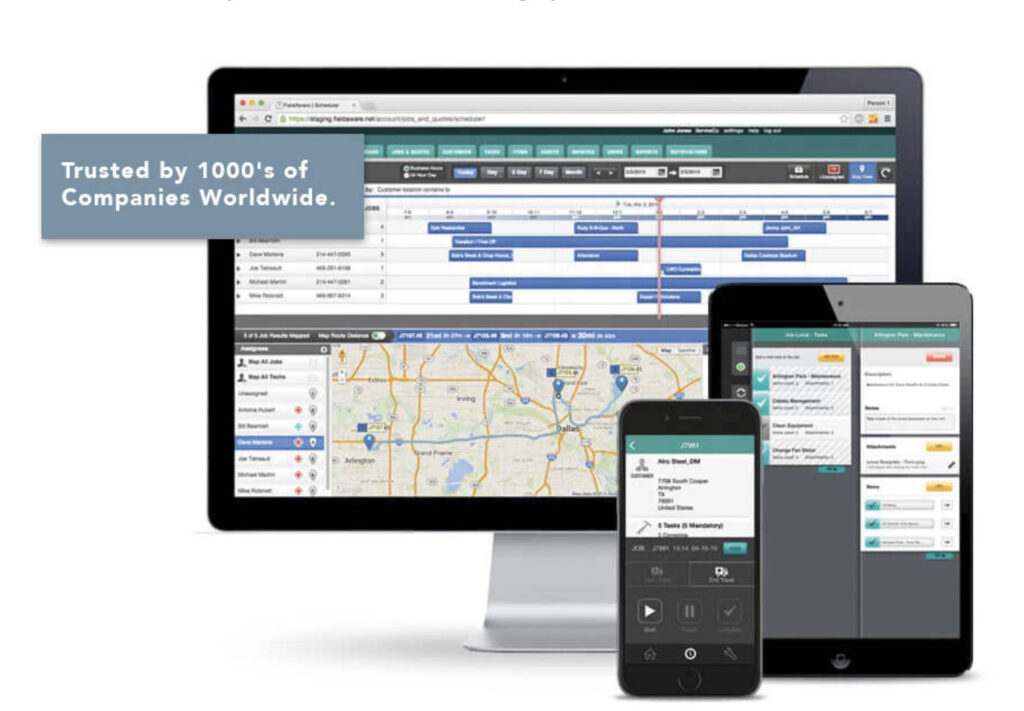The Big Discussion: What Challenges, Opportunities and Trends Should We Expect in 2019? Part 1
In the first of a four-part series, we bring together three industry experts and put four key questions for them to answer to give us a balanced view of the major trends impacting the field service sector. With responses from Bill Pollock, Strategies for Growth, Marc Tatarsky at FieldAware, and Richard Pratley from SimPRO, we look forward to what we can expect across the next twelve months.
2018 was a year in which we saw a number of significant changes move from the fringes of discussion within our industry to becoming an established part of mainstream discussion and in some cases fundamental parts of common place strategy within the field service sector.
The Internet of Things (IoT) for example, has become a staple part of field service delivery with many organisation having already adopted some layer of IoT technology which they are utilising within service delivery and the majority of those who have yet to take their first steps into connected field service are actively planning to do so in the not too distant future.
And as is often the case with technology in field service, the emergence of IoT in our sector, much as mobile did before it, has resulted in seismic changes into the processes and work-flows that underpin how we define service excellence. For example, we have seen servitization become an increasingly popular over-arching strategy for many manufacturers as they shift towards more customer-centric, service-focussed revenue strategies.
Even amongst those organisations who have yet to commit to a fully servitized business model, there are many who are shifting towards adopting a pro-active approach to service delivery, with increasing operational efficiencies and greater customer satisfaction two of the major benefits being heralded by such developments – which are again enabled and empowered by IoT.
Yet, at the same time other technologies that should be having positive impacts on field service delivery, in particular Augmented Reality (AR), have yet to evolve as rapidly, seemingly stagnating in the early adopter phase. Perhaps, 2019 may be the year we see AR finally emerge from its embryonic potential to also becoming a fully established part of the field service sector?
Or maybe, there will be other key breakthroughs, whether they be technologies, or strategies, that will shape the future of field service to get a flavour of what we may expect across the next twelve months we’ve brought together a panel of experts to get their opinions on what to expect in 2019. We begin this series, however, by taking stock from last year.
Across the last twelve months, what do you think has been the biggest shift in how we approach field service delivery?
BILL POLLOCK, PRESIDENT, STRATEGIES FOR GROWTH
The last 12 months have been quite a bit more active among global Field Services Organisations (FSOs) with respect to their acquisition and implementation of new technologies. For example, after having spent a number of years more as a perennial line item on an organisation’s “wish list”, Augmented Reality (AR) has gained a much wider acceptance, and is presently in use by more than twice as many FSOs as just a year earlier. In fact, the trend lines for AR adoption are have begun to increase at an accelerating rate.
We are now also seeing the further incorporation of Artificial Intelligence (AI) and Machine Learning into existing FSM systems.
As a result, many FSOs have already begun the transformation from the traditional break/fix model to the use of predictive diagnostics and AI-powered chatbots to facilitate and expedite.
MARC TATARSKY, SVP MARKETING, FIELD AWARE
We are seeing a convergence of technology capabilities changing how field service operations are being enabled. One of the key drivers of this convergence is analytics and a data platform that is empowering organisations to take insights from various new technologies (IoT, AR eg) and existing data within other Systems of Record to provide context and the ability to make “new” business decisions.
Field service organisations, due to the complexity of the operations, have always embraced technology and were early adopters of analytics. We are seeing an evolution of analytics in field service, moving from a need to turn data into information, to meaningful business insight and then to decision-making capabilities.
Over the past twelve months we are now experiencing a shift to a more strategic approach to business intelligence. Field service leaders are applying analytics to drive value-adding initiatives into the wider business, with customising service and product innovation, for example.
RICHARD PRATLEY, MANAGING DIRECTOR UK, SIMPRO
There are a number of external pressures that are aggregating together forcing business to make a shift and change about how they are approaching field service delivery.
All businesses are looking to do more for less thanks to a skilled labour shortage, pricing pressures on services, travel and resource and compliance cost increases and customer demand for value.
During the last twelve months, we’ve seen more field service businesses looking to streamline and automate their operations to enable them to scale up their workforce without adding in more resources.
The second part of the big discussion will be published next week, when the panel answer questions on IoT.
Further Reading:
- Read more from The Big Discussion series
- Read more about Augmented Reality on Field Service News
- Visit FieldAware’s website
- Visit SimPros’s website
- Read more articles by Bill Pollock on Field Service News
- Read more articles by Marc Tatarsky on Field Service News
- Check out 23 premium resources on field service technology (PRO)

See FieldAware in action by requesting your demo now.
FieldAware is a top-rated mobile field service management software that lets you easily schedule and dispatch field workers, assign jobs, invoice customers and more.


